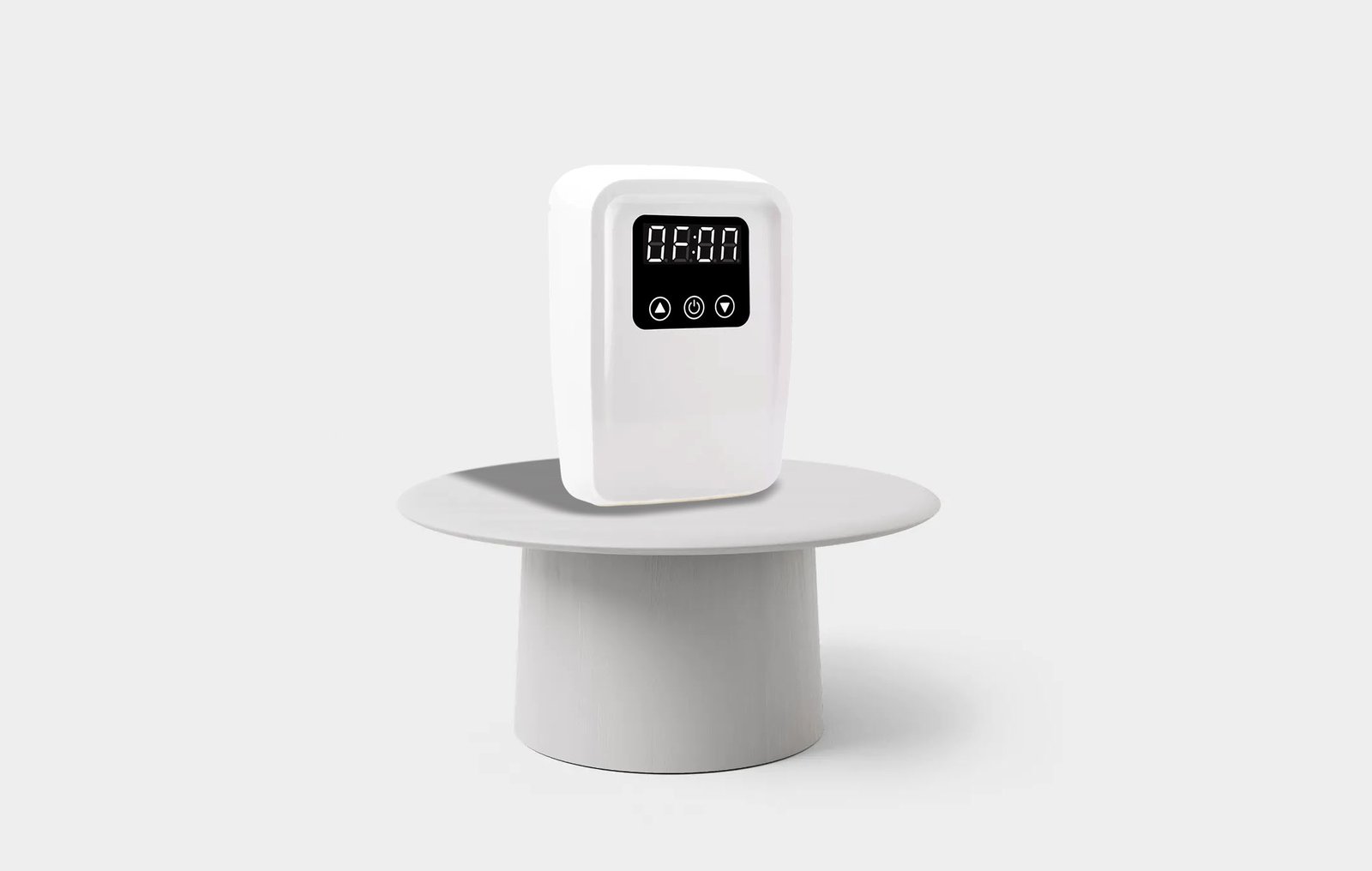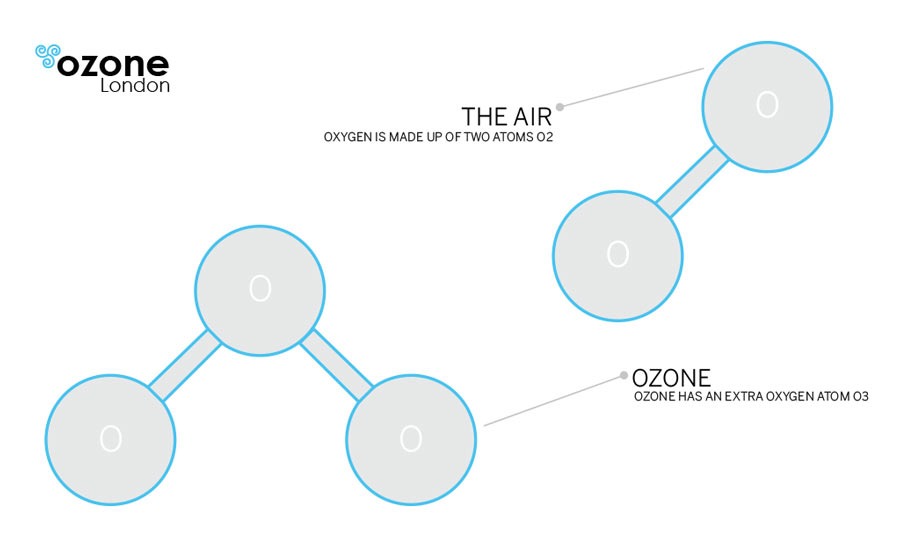London Ozone
Discover Wellness, Naturally!


Ozone (O3) is a colorless gas with a distinct odor often likened to the refreshing scent that follows a spring thunderstorm. Recognized as the strongest oxidant among common oxidizing agents, O3 is a remarkably stable gas. Its production involves passing air through electrodes with a high, alternating potential difference, where the energy input causes the splitting of the O2 (oxygen) molecule. The resulting single ‘O’ swiftly combines with available O2 to form the highly reactive O3.
Naturally occurring in the environment, O3 serves as a safeguard against oxidation substances that pose health hazards. Ozone treatment, an organic method, leaves no side effects and does not trigger allergic reactions when properly administered—it remains harmless to both humans and the environment. Regular air treatments, at least twice a year, enhance the quality of life for allergy sufferers and asthmatics by eliminating irritant fungi, mold, and allergens.
For a more engaging exploration of the power of ozone, check out this captivating video from The Wizard of Clean.
Understanding the Mechanism of Virus Inactivation by Ozone
Viruses, distinct entities composed of crystals and macromolecules, operate independently and replicate solely within host cells. Unlike bacteria, their multiplication occurs within the host cell. Ozone, a powerful oxidizing agent, deactivates viruses by penetrating their protein coat and causing damage to the nucleic acid core, particularly the viral RNA. At higher concentrations, O3 further dismantles the capsid, the exterior protein shell, through oxidation. Various virus families, including poliovirus I and 2, human Rotaviruses, Norwalk virus, Parvoviruses, and Hepatitis A, B, and non-A non-B, are susceptible to the virucidal effects of ozone.
Most research on it’s virucidal effects have centred upon ozone’s ability to break apart lipid molecules at sites of multiple bond configuration. Indeed, once the lipid envelope of the virus is fragmented, its DNA or RNA core cannot survive.
In this study, we found that the effect of O3 on Poliovirus infectivity was both time- and dose-dependent, and PV1 could be completely eradicated after ozone disinfection for 105 s. It has been previously reported that PV1 infectivity is completely inhibited upon treatment with 0.2 mg/L ClO2 for 12 min, 0.4 mg/L ClO2 for 8 min, or 0.8 mg/L ClO2 for 4 min. This proves that ozone is more effective as a disinfectant than ClO2 (Chlorine dioxide).
Ozone is also effective as an air treatment in the hospitals and it has been proved to eliminate Phage and eukaryotic virus (murine norovirus MNV-1). “These findings suggest that ozone used at a low concentration is a powerful disinfectant for airborne viruses when combined with a high RH. Air treatment could therefore be implemented inside hospital rooms ventilated naturally.”
Ozone gas has been proven to kill the SARS coronavirus and since the structure of the 2019-nCoV coronavirus is almost identical to that of the SARS coronavirus, it is relatively safe to say that it will also work on the new coronavirus though it must be noted that there is no studies to date except one that is current ongoing in China at the Institute of Virology In Hubei. Progress of that study has shown that it works and the study should be concluded soon and officially published in the journal Virology.
Over 17 scientific studies have demonstrated O3 gas’s ability to destroy the SARS coronavirus. In one such study, ozone solution disinfectant at a high concentration of 27.73 mg/L inactivated the SARS virus in just 4 minutes.
Ozonation also proves effective against algal toxins, achieving near-complete destruction of microcystins, nodularin, and anatoxin-a.
“Ozonation is an effective process for destruction of both intracellular and extracellular algal toxins. Essentially complete destruction of microcystins, nodularin and anatoxin-a can be achieved if the ozone demand of the water is satisfied.” (Yoo et al., 1995b; Chorus & Bartram 1999).
This is an interesting study about the drinking water disinfection. Among many “Ozone was the most efficient disinfectant for all types of microorganisms.” The estimated risks to health from disinfectants and their by-products are extremely small in comparison to the real risks associated with inadequate disinfection and it is important that disinfection should not be compromised in attempting to control such by-products. The destruction of microbial pathogens through the use of disinfectants is essential for the protection of public health.
In ‘Water and air ozone treatment as an alternative sanitizing technology’ study we read: “treatment is considered a safe and effective disinfectant tool for the decontamination of water and equipment [18] and even for food applications [20]; indeed, food safety is a top priority [21]. It may therefore be regarded as a valid alternate means of disinfection. (…) Among the gaseous sanitizers investigated in recent years, such as ozone, chlorine dioxide (ClO2), and cold plasma, ozone has proved the most effective [13], being a powerful oxidant for water treatment”.
To improve the quality of water “the concentration of ozone needed is very low. O3 has strong oxidizing properties. The speed of disinfection is very fast, and the inactivation effect is better than that of disinfectants such as chlorine, chloramines, and chlorine dioxide; it can also oxidize and degrade organic substances in water. The remaining O3 in water can naturally decompose and the quality of water can be improved”. (Inactivation of Poliovirus by Ozone and the Impact of Ozone on the Viral Genome)
For a more visual understanding of how O3 works, be sure to watch the video featuring David Hart.